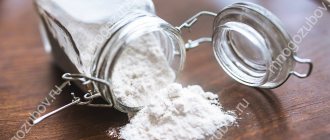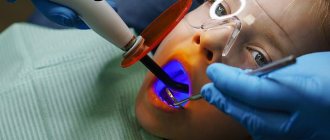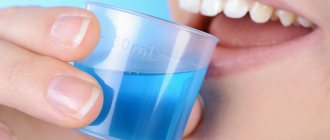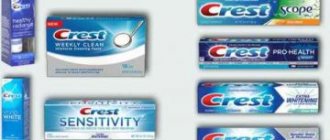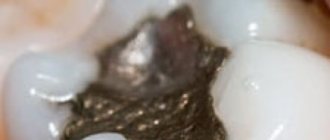Spraying on crowns
Design features
What are the types of sprayed crowns?
Features of dental crowns with spraying
How to install sprayed crowns
Indications and contraindications for the installation of metal crowns with spraying
Advantages and disadvantages
Just a few decades ago, coated metal crowns were extremely popular. Now this method is a thing of the past, as aesthetic dentistry offers more modern methods of smile restoration. However, there are clinics that still offer this service. What is special about sprayed crowns? And why don’t we use them in our practice?
Cost of restorative teeth whitening
It should be noted that the cost of such a procedure as restorative bleaching is significantly less than other methods. For example, when compared with the installation of ceramic veneers, such a lightening option will cost the patient two to three times less. At the Mane Clinic innovative dentistry clinic in Moscow, you can undergo a comprehensive teeth cleaning procedure + deep fluoridation of all teeth for only 3,500 rubles.
The result will be snow-white teeth and a perfect smile, which will undoubtedly delight you and everyone around you for a long time, provided you take proper care of your oral cavity.
Features of dental crowns with spraying
Metal crowns themselves are quite durable and, compared to other orthopedic structures, inexpensive, but they are significantly inferior in aesthetic properties. Ceramic coating allows you to achieve the effect of natural teeth, thereby improving their appearance.
Separately, it is worth mentioning the coating of dental crowns with zirconium. Zirconium prevents the penetration of metal particles into the oral cavity, thereby minimizing the risk of allergic or inflammatory reactions.
For whom is the procedure relevant?
I must say, the procedure is not so popular in itself. A person with a completely healthy oral cavity resorts to completely different methods of whitening, ranging from laser to medication.
But if the enamel is destroyed on its own, or a person needs unattractive dentures, spraying creates the greatest demand among dental patients. Some prefer even exotic techniques of spraying enamel on their teeth to make them platinum or gold. But first things first.
- The process of destruction of enamel leads not only to numerous diseases of the oral cavity, but also to a significant decrease in the aesthetics of a smile. And alas, banal teeth cleaning cannot cope with this destructive process, even if it is performed by a professional on an outpatient basis.
- However, there is a new hygienic procedure that involves not only effective sanitation of the oral cavity, but also medicinal spraying of concentrated calcium onto the surface of the teeth. Previous cleaning techniques, for example, ultrasonic, were aimed only at eliminating the stone and subsequent application of fluoride-containing paste to the surface of the bone tissue.
- This method really helped to avoid the formation of carious cavities, but it only protected dentin, without affecting the deep structures.
- Modern cleaning technologies are suitable not only for whitening, but also for deep restoration of tooth enamel. During the procedure, the dentist applies a special solution containing calcium in the optimal amount.
- In luxury segment blades, exclusive products are used for this procedure, for example, pearl powder. As a result, the tooth is saturated with calcium and becomes much less susceptible to various diseases.
- In addition, the surface is polished, which creates the effect of a real Hollywood smile. The powder granules have a specific structure and do not contain hard abrasives, which eliminates an increase in sensitivity after using the method.
As a result of cleaning with calcined coating, the patient receives:
- A charming snow-white smile;
- Healthy shine and ideal density;
- Minimum sensitivity threshold after applying the method;
- Strengthening teeth and prolonging their healthy state;
- Reliable protection against caries, pulpitis and other destructive processes.
How to install sprayed crowns
Coated metal dentures can be installed on both the front and chewing teeth. To restore teeth in the smile area, structures with zirconium coating are used. Other types of coating are suitable for restoring chewing teeth, since these teeth are most often invisible to others.
Installation of dentures consists of several stages
- Preparation
- Preparation (creating the desired shape for the crown).
- Taking impressions
- Fitting and installation.
Fluoride varnish
The composition of the varnish, which protects tooth enamel and prevents calcium leaching, includes:
- sodium fluoride;
- shellac;
- fir balsam;
- chloroform;
- ethyl alcohol, etc.
All these substances act in synergy - they provide high-quality disinfection of the treated surface and effectively strengthen it. When enamel comes into contact with sodium fluoride, a hard protective layer is formed. It is thanks to him that the unit ceases to be overly sensitive to salty, spicy and sour foods, and temperature changes.
The mixture has a positive effect on the condition of the gums. After its use, soft tissues become less inflamed and bleed less.
Indications and contraindications for the installation of metal crowns with spraying
Table 1. Indications and contraindications for the installation of sprayed crowns
| Indications | Contraindications |
|
|
Creating glitter
Most often, when restoring central teeth, doctors use materials that, upon detailed study, can be classified as microhybrid composites. This is something average. Both strength is present and shine can be created with certain (sometimes heavy) efforts.
In 2002, a unique development was created for these purposes—the liquid polisher BisCover (Bisco). The Bisco company positioned BisCover as a resin sealant, unfilled, especially wear-resistant and imparting an excellent shine to the treated surface. You know that when any composite material polymerizes in the presence of oxygen, an oxygen-inhibited layer is formed on the surface. It may have different thicknesses between adhesive systems and composite materials.
When the surface of the composite is polymerized, the oxygen-inhibited layer of the composite material looks shiny, but if this layer is removed mechanically, the surface of the composite will become dull. (Figure 1).
Bisco has been able to develop a version of the unfilled resin that, given sufficient energy flow, is able to polymerize completely without an oxygen-inhibited layer. And it looks shiny (Figure 2).
The new version of BisCover is based on the photoactivator CQ (camphoroquinone) and has an energy absorption spectrum at a wavelength of 468 nm, that is, it can be polymerized by all types of light sources (halogen, plasma, argon and LED polymerizers). The effect of BisCover (I call it “composite glaze”, with a similar purpose as for ceramics – “ceramic glaze”) was observed in practice on the first fixed case, 2 years after application. (Fig.3)
Please note that the shine of the enamel of the adjacent tooth is similar to the shine of the restored surface coated with BisCover. Further, the use of BisCover was targeted, and today I can show you cases from a 7-year observation period. BisCover shows itself especially clearly when restoring central teeth. It is important to convey not only the color and shape of the adjacent symmetrical tooth, but also to reveal the microtexture.
After creating the macro shape of the marginal ridges, the surface is drawn out with 12-sided burs. It takes on the appearance of an even cut (smooth) texture. Under no circumstances should the surface be polished to a “mirror shine” before applying the composite glaze. This will reduce the adhesion of the resin. She will "slip".
Next, using diamond burs with a red notch, we create the surface microtexture according to the planned scheme. We hold the bur in our hand and make filing movements along the edge ridges, simulating growth lines and minor depressions. After all this, the surface is etched with orthophosphoric acid Uni-etch 37% (Bisco) (in fact, the acid does not etch the surface of the composite, the task is to chemically clean it from the organic substance, because the patient closed his mouth).
A layer of BisCover is dried and applied, left for literally 5 seconds, the solvent evaporates, and polymerized for at least 30 seconds at the power of your polymerization lamp 500mW/cm2. As a result, you get the development of microtexture, the play of light on the surface of the restoration and a brilliant “glazed” appearance. Do not be alarmed if you notice a slightly grayish tint to your restoration after applying the resin. This phenomenon is temporary and optical. You won't notice anything at your next visit.
The polymerized resin has a transparent appearance (Figure 4).
Advantages and disadvantages
One of the main advantages of such prostheses is durability. With proper care, they can last more than 10 years. However, there are significant disadvantages: allergies or galvanic reactions may occur. The second occurs due to the presence of dentures made of different metals in the mouth. The fact is that the spraying is quickly erased, and the exposed base causes the appearance of galvanosis.
Signs of galvanosis:
- unpleasant metallic taste;
- headache;
- redness, swelling of the tongue;
- dry mouth;
- distortion of taste.
Another disadvantage of using sprayed crowns is the risk of a gap appearing between the structure and the gum. An infection can penetrate through this gap, and this is fraught with the development of inflammation.
We value your health, so we abandoned this type of prosthetics. For our patients, we offer more modern, high-quality, and most importantly, safe methods of dental restoration, for example, ceramic crowns or zirconium dioxide crowns.
Is it possible to use varnish at home?
It is allowed to carry out a strengthening procedure at home, but you should still consult a doctor first. Difficulties will arise already at the stage of purchasing varnish - you won’t be able to find a high-quality and safe solution on the open market. It must be ordered from a dental center or specialized medical store.
If you do find a drug and the dentist allows you to use it yourself, do not forget about the rules:
- pre-dry your teeth using cotton swabs;
- apply the product in a very thin layer;
- The varnish should dry naturally for about 5 minutes;
- Do not eat anything for twelve hours after the procedure.
